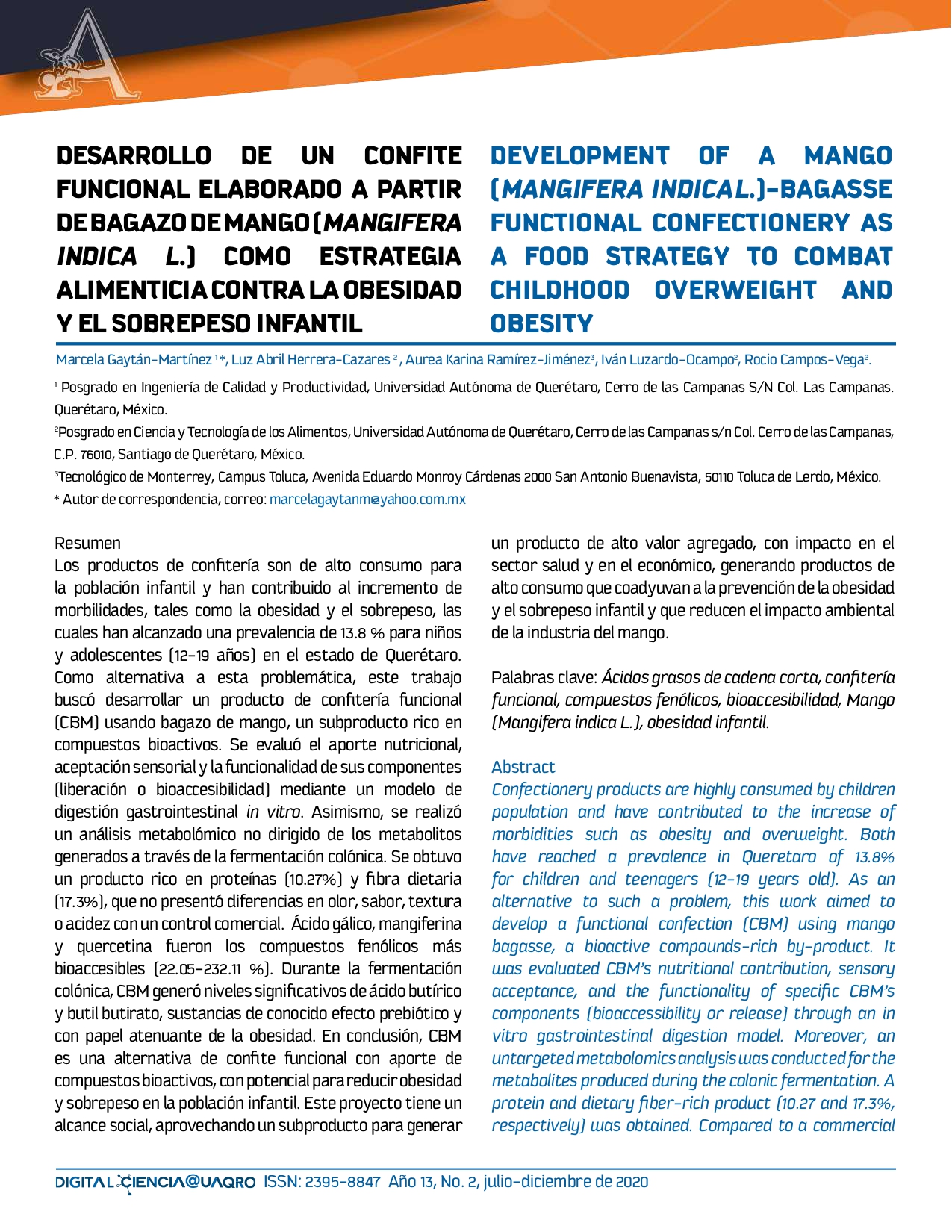Resumen
Los productos de confitería son de alto consumo para la población infantil y han contribuido al incremento de morbilidades, tales como la obesidad y el sobrepeso, las cuales han alcanzado una prevalencia de 13.8 % para niños y adolescentes (12-19 años) en el estado de Querétaro. Como alternativa a esta problemática, este trabajo buscó desarrollar un producto de confitería funcional (CBM) usando bagazo de mango, un subproducto rico en compuestos bioactivos. Se evaluó el aporte nutricional, aceptación sensorial y la funcionalidad de sus componentes (liberación o bioaccesibilidad) mediante un modelo de digestión gastrointestinal in vitro. Asimismo, se realizó un análisis metabolómico no dirigido de los metabolitos generados a través de la fermentación colónica. Se obtuvo un producto rico en proteínas (10.27%) y fibra dietaria (17.3%), que no presentó diferencias en olor, sabor, textura o acidez con un control comercial. Ácido gálico, mangiferina y quercetina fueron los compuestos fenólicos más bioaccesibles (22.05-232.11 %). Durante la fermentación colónica, CBM generó niveles significativos de ácido butírico y butil butirato, sustancias de conocido efecto prebiótico y con papel atenuante de la obesidad. En conclusión, CBM es una alternativa de confite funcional con aporte de compuestos bioactivos, con potencial para reducir obesidad y sobrepeso en la población infantil. Este proyecto tiene un alcance social, aprovechando un subproducto para generar un producto de alto valor agregado, con impacto en el sector salud y en el económico, generando productos de alto consumo que coadyuvan a la prevención de la obesidad y el sobrepeso infantil y que reducen el impacto ambiental de la industria del mango.

Esta obra está bajo una licencia internacional Creative Commons Atribución-NoComercial 4.0.

